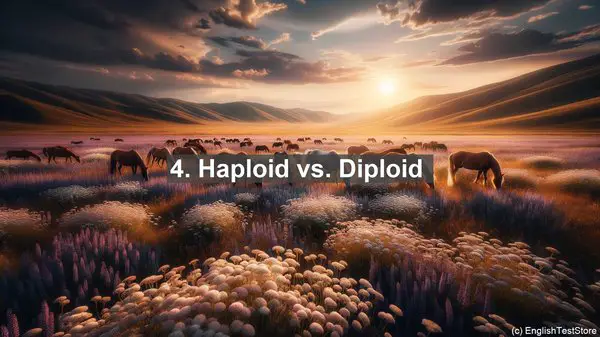Introduction: The Importance of Precise Terminology
Welcome to this biology lesson. Today, we’ll be discussing an essential aspect of chromosome biology: precise terminology. Accurate understanding of terms is crucial in this field, as even a slight confusion can lead to misinterpretations. So, let’s dive into the top 10 commonly confused words and clarify their meanings.
1. Chromosome vs. Chromatid
The terms ‘chromosome’ and ‘chromatid’ are often used interchangeably, but they have distinct meanings. A chromosome refers to the entire DNA molecule, while a chromatid is one of the two identical copies of a chromosome after replication. Remember, a chromosome consists of two chromatids held together by a centromere.
2. Gene vs. Allele
While both ‘gene’ and ‘allele’ refer to segments of DNA, they differ in their roles. A gene is a specific sequence of DNA that encodes a particular trait, like eye color. On the other hand, an allele is a variant of a gene. For example, the gene for eye color may have alleles for blue, brown, or green eyes.
3. Homologous Chromosomes vs. Sister Chromatids
During cell division, chromosomes can be confusing. Homologous chromosomes are similar in size, shape, and gene sequence, but they come from different parents. In contrast, sister chromatids are identical copies of a chromosome. Remember, homologous chromosomes pair up during meiosis.
4. Haploid vs. Diploid
These terms describe the number of chromosome sets in a cell. A haploid cell has one set of chromosomes, while a diploid cell has two sets. In humans, haploid cells are found in the reproductive system, while most other cells are diploid.

5. Karyotype vs. Genome
A karyotype is a visual representation of an individual’s chromosomes, arranged in pairs. It helps identify chromosomal abnormalities. On the other hand, a genome is the complete set of genetic material, including all the genes and non-coding DNA, in an organism.
6. Centromere vs. Telomere
Centromeres and telomeres are specialized regions of a chromosome. The centromere is the point where the two chromatids are joined, while the telomeres are the protective caps at the ends of a chromosome. Telomeres play a crucial role in maintaining chromosome stability.

7. Mitosis vs. Meiosis
Both mitosis and meiosis are types of cell division, but they have different purposes. Mitosis is for growth, repair, and asexual reproduction, producing two identical daughter cells. Meiosis, on the other hand, is for sexual reproduction, resulting in four genetically diverse cells.
8. Transcription vs. Translation
These terms are related to protein synthesis. Transcription is the process of copying DNA into RNA, while translation is the conversion of RNA into a protein. Both processes are essential for gene expression.
9. Genotype vs. Phenotype
When studying traits, it’s important to differentiate between genotype and phenotype. The genotype refers to the genetic makeup of an organism, while the phenotype is the observable physical or biochemical characteristics resulting from the genotype-environment interaction.
10. Recombination vs. Mutation
Recombination and mutation are two mechanisms that introduce genetic variation. Recombination is the shuffling of genetic material during meiosis, leading to new combinations. Mutation, on the other hand, is a permanent alteration in the DNA sequence. Both processes contribute to genetic diversity.
